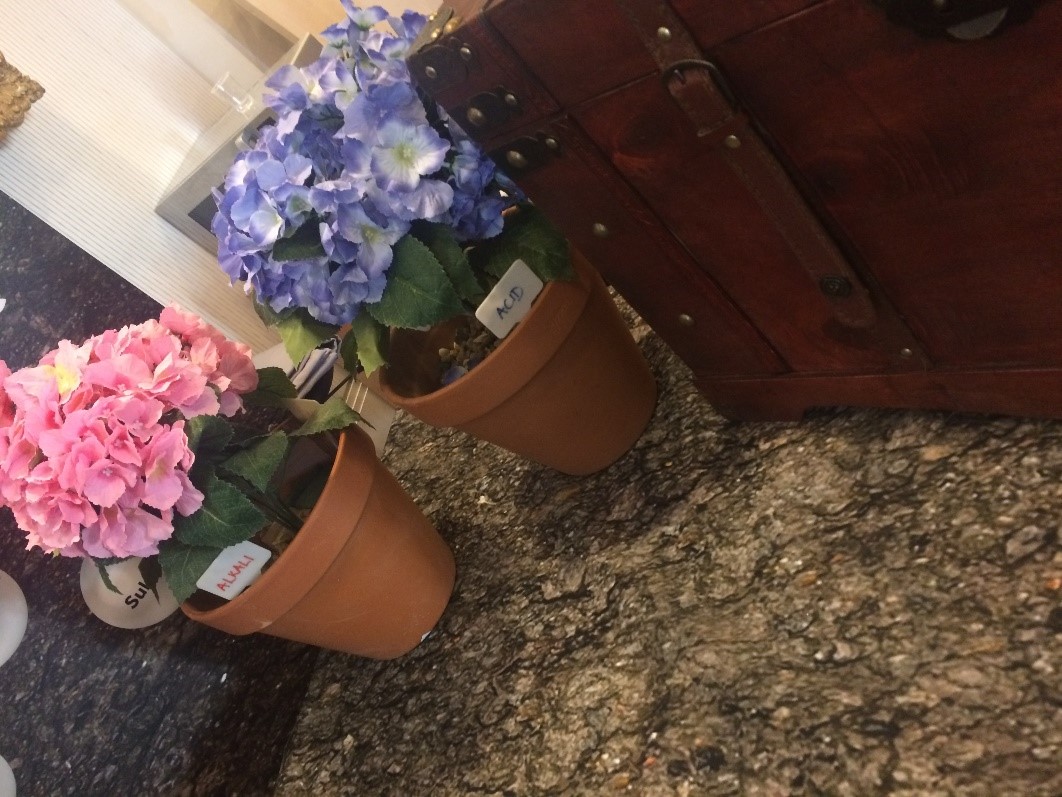Earlier this month a group of Reading soil scientists took their research to the Royal Society Summer Science Exhibition to tell the public all about the importance of soil. Jeremy Lelean from the Soil Security Programme tells us how it went.
A joint venture between the Soil Security Programme (SSP) and the University resulted in a successful bid to attend this year’s Royal Society Summer Science Exhibition – the UK’s largest and most high-profile science communication event.
The SSP is funded by UK Research and Innovation and comprises 15 research projects across a range of UK institutions, including the University of Reading. It exists to better understand how soil resists, recovers and adapts to land use and climate change. But at the heart of the programme is making sure that this research gets heard about in a useful and accessible way. This can mean interacting with policy makers, land owners or commercial partners or, in this case, reaching out to members of the public.

Harry Barratt (Rothamsted Research), Alice Dibley (UoR), Soon Gweon (UoR), Simon De-Ville (Loughborough University) and Harriet Robson (UoR)
We’d been preparing for the exhibition since last November, and all the hard work from SSP scientists and university staff from events, the research communications and impact teams and the press office culminated in us presenting our exhibit at the Royal Society in London from 2 to 8 July.
‘Soil: Our Buried Treasure’ showed both soil’s importance – but also how it is overlooked. We explained the function of soil in context by comparing the contribution of soil structure, life and nutrients combine to make soil the living breathing system we need it to be.
Visitors were able to get hands on in making a rain storm and seeing its effect with our concrete capping display, get up close and personal with soil wildlife in our Soil Safari and learn about pH and how it affects plant growth with our famous Soil Security Hydrangeas.
As well as this we commissioned this video by poet Anthony Anaxagorou to help spread the word about soil:
Excellently, Anthony was able to make it to the first morning of the exhibition and give a live performance of the poem to the assembled press and other visitors. This must have left an impression because John Hammond from the School of Agriculture and Development, seen below engaging a younger visitor with the Soil Safari, was invited to appear on BBC Radio 4 Farming Today. If you didn’t hear John live you can catch up here.

In the interview, John explains the cutting-edge research he’s been doing at the University into how plants can access phosphorous in the soil. Incredibly, 90% of the phosphorus applied to our fields isn’t used by plants because it ‘sticks to’ the soil. John has been improving this by selecting oil seed rape plant strains which attract beneficial bacteria to their roots which can make phosphorous available to plants. He hopes that this research can be applied to other cropping plants such as wheat and barley.
An important part of the exhibition was the two evening soirees attended by principal investigators from the Soil Security Programme who were able to meet scientists, government and industry partners in a more informal atmosphere. This led to many making connections they otherwise wouldn’t have. And, as part of our commitment to developing younger researchers it was particularly good to have Soil Security Fellow Jackie Stroud at one of the functions.

Dr. Jackie Stroud (Rothamsted Research), Professor Chris Collins (UoR), Prof Jonathan Leake (Sheffield University) and Prof Richard Bardgett (University of Manchester).
It’s worth mentioning that of the nearly 50 volunteers who took part, 39 were post-doctoral researchers or PhD students. This is a vital learning experience for them to acquire the essential skills needed as they move forward in their careers. Soon Gweon of the University’s School of Biological Sciences also lent us his microbiological expertise and Soil Security Fellow Nicholle Bell was there to spread the word on how important soil is to concrete capping and erosion.
The primary aim of us being at the exhibition was to engage with the public and share research stories with those who, perhaps, weren’t as engaged with soil as we’d like – and to this end, our superb team of volunteers managed to have 2,500 positive engagements throughout the week. All went away with our map of how to discover the buried treasure within soil for themselves.
Jeremy Lelean is Web and Communications Officer for the Soil Security Programme, which is a UKRI-funded programme with fifteen projects spanning seventeen UK research institutions. Its aim is to fundamentally understand how soil functions and how it adapts to land use and climate change. A key part of the programme is deliver this evidence base at a scale that is useful to both policy and commercial decision makers. For more information, visit: www.soilsecurity.org
The Reading Soil Security team would like to thank: Hannah Millway, from the University Design and Print Studio, and Kate McNaboe, from the events team, for their help in designing and producing the exhibit; Pete Castle in research communications and Katie Cooper in impact team for the help in developing the video; Pete Bryant in the Press Office for arranging John Hammond’s Farming Today interview; and the 50 volunteers who took part.





